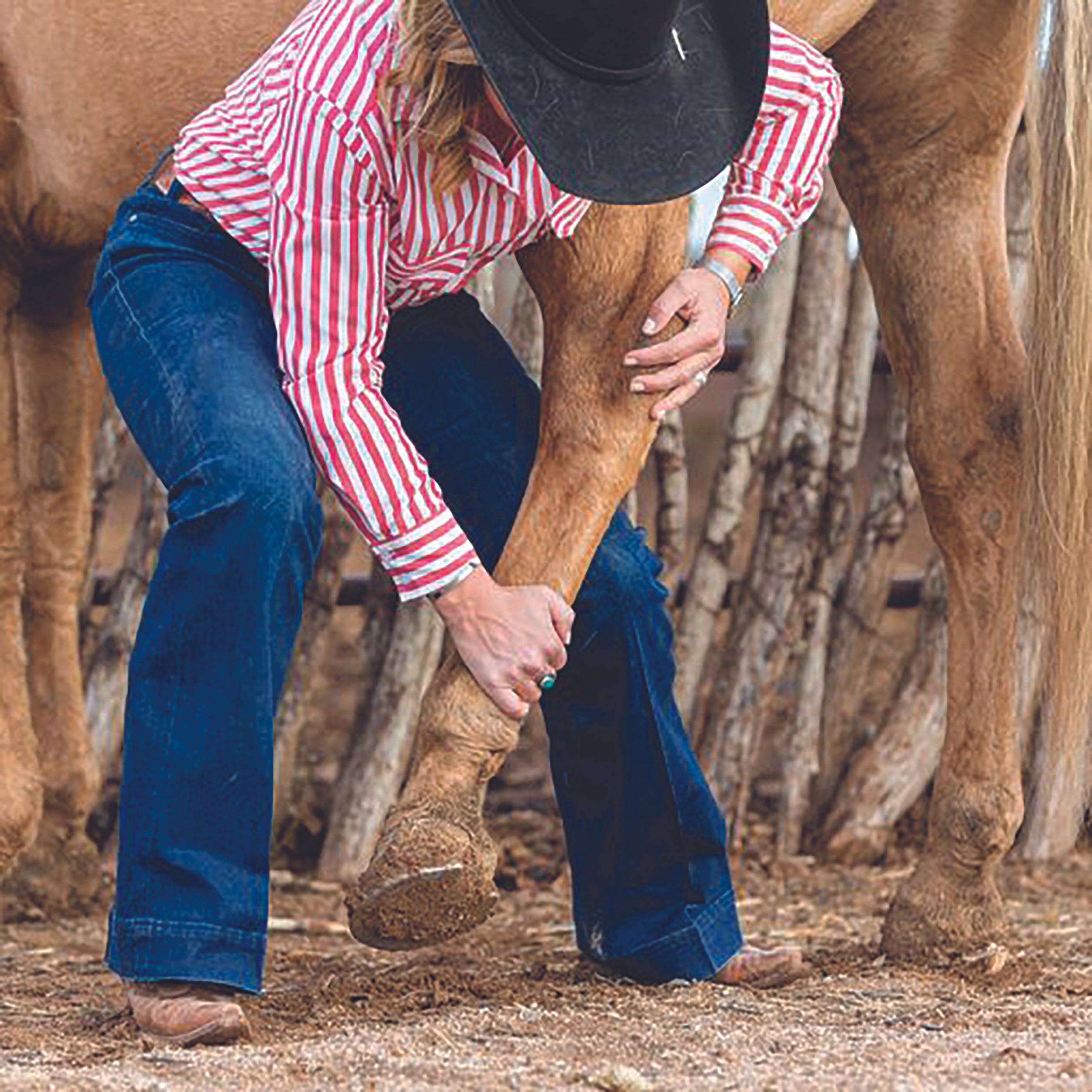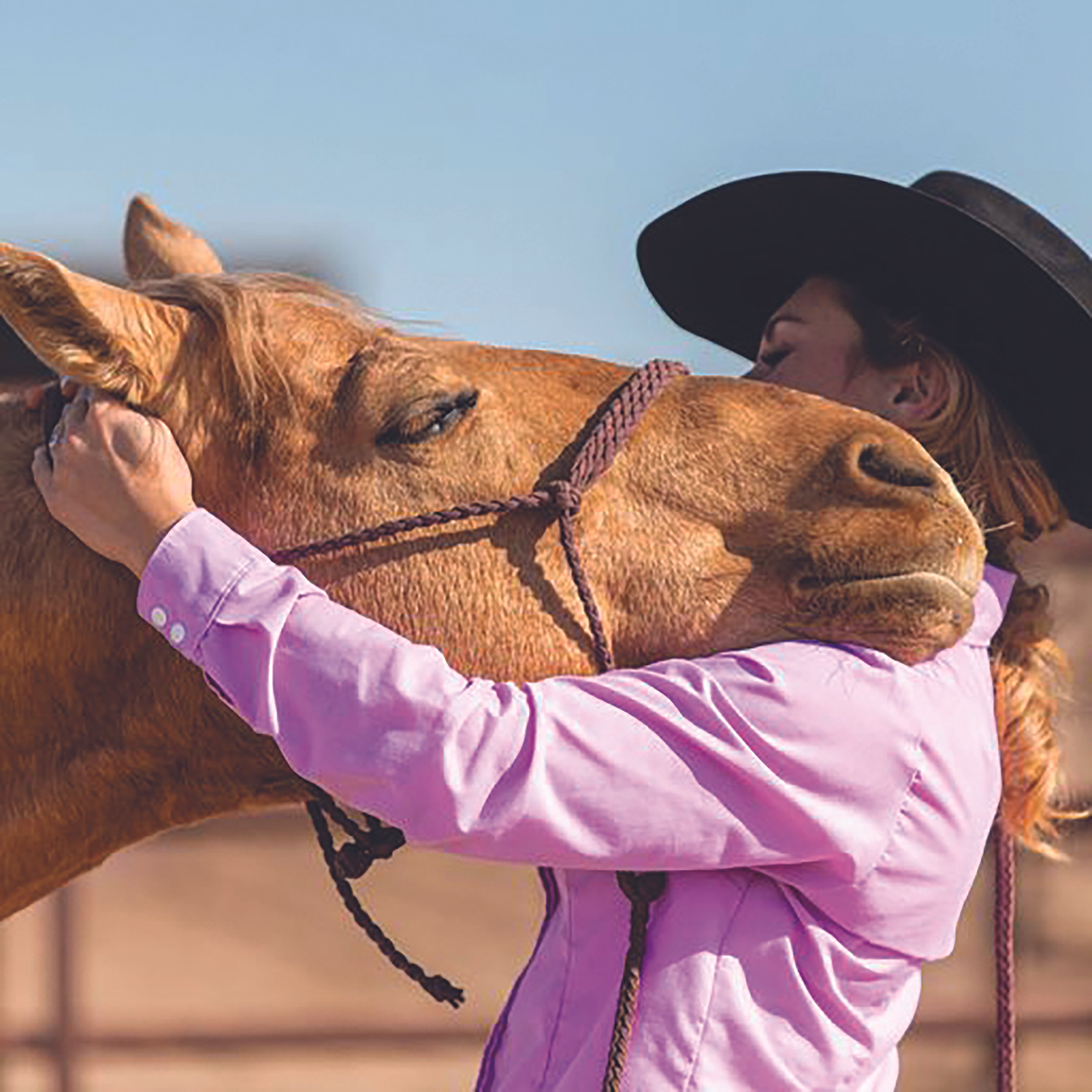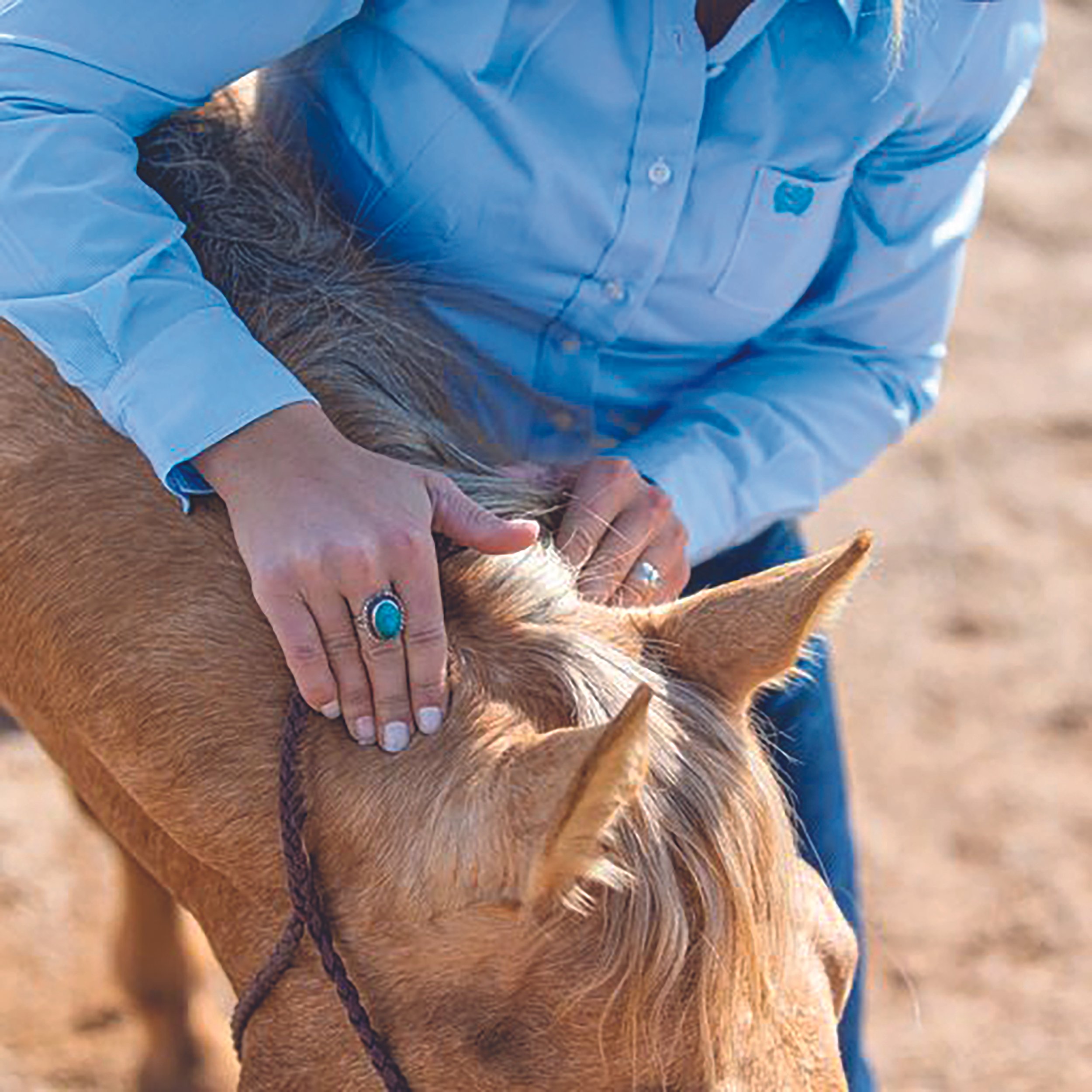Equine Body Work
A Day with Kaycee Monnens Cortner
Photography contributed by Kaycee Monnens Cortner
Meeteese, Wyoming
Kaycee Monnens Cortner doesn’t remember life before horses, and she can’t imagine life without them now. She started riding as a two-year-old on her parents’ ranch, picking up a natural aptitude as she grew. Years later, she’s so in tune with horses she has made a career performing equine body work.
“I love what I do. I have seen some of the most beautiful ranches in the country and met a lot of great people.”
On a recent spring day, Kaycee assessed a mare at the LU Ranch, outside of Meeteetse, Wyoming, where she and her husband, Tobias live and work. The ranch crew had just finished gathering and branding calves, both tasks the mare helped complete. As rain pounded the barn roof, Kaycee worked her hands over the mare, telling her what the horse could not.
“She has a headache,” Kaycee said. “I can tell by looking in her eyes and watching how she’s moving.”
Gently massaging the area around the atlas vertebra, located right behind the horse’s ears, Kaycee explained how she first observes a horse as they walk, then feels with her hands.
“I can tell a lot about a horse both ways,” she said.
After some time, the mare lowered her head toward the ground.
“That tells me she’s feeling relief,” Kaycee said. “Just as we would stretch our neck to relieve pressure, she’s doing the same thing.”
Kaycee continued working across the mare’s sides and down her legs, stretching her legs out to the back, side, and front as the mare became more visibly relaxed with each move. Just as an athlete stretches after a workout, Kaycee said horses need similar treatment.
“Some owners believe in turning them out to pasture after a hard workout, believing a break from work and time in the pasture cures all. But sometimes that’s not enough,” she explained.
Through her business, Outta Line Equine Bodywork, Kaycee has traveled across Montana, Wyoming and South Dakota working on ranch and rodeo horses and educating their owners on proper body care.
“Times have changed,” she said. “Horses cost a lot of money and today it’s even more important to properly care for them.”
In the late 80s, two men from Gillette pioneered horse bodywork. Bill Hackett was all cowboy and could easily read a horse and Buster Harlow was a massage therapist. The two met as Buster treated Bill whenever he “wrecked on a horse and needed to be put back together.”
Bill knew horses and Buster knew bodies, and an interesting collaboration was born.
“They had different ways of thinking,” Kaycee said of the two men. “Buster had the energy and massage, and Bill watched the horse’s movement and mechanics.”
Years later, when Kaycee was a teenager, she attended a South Dakota workshop taught by a student of the two men, Randy Hapney. Immediately, she knew equine bodywork was something she wanted to pursue, and she spent her high school years garnering massage knowledge. At age 20, she met Bill Hackett and came under his tutelage, hauling her horses to his ranch and continuing her education in bodywork as his apprentice.
“Bill was good for me,” she said. “He would make me show him what I knew and tell me whether it was good or not. He gave me the confidence to work on horses for the public.”
Throughout college, Kaycee found her niche at college rodeos, treating 10 to 14 horses every weekend for the competing athletes. As she gained more experience, she fine-tuned her abilities and began using a combination of techniques to not only read the horse, but to treat it.
“Some in my field have more of an eye for figuring out what the problem is,” Kaycee said. “Others have a feel for it. I like to combine the two.”
And there is much to analyze beyond movement – much like whole wellness for humans, horses can exhibit health patterns.
“When I find a problem with a horse, I take a lot into consideration,” she said. “Horses don’t just suddenly have bad attitudes or become lazy. They could be in pain. What’s their nutrition like? How are their feet and teeth? There are a lot of things to think about and we need to get to the root of the problem to fix it.”
She involves other equine professionals, such as veterinarians, as needed if the problem is beyond her realm of treatment. Overall, Kaycee said continual maintenance of horses keeps them healthy. In addition to proper nutrition and exercise, flexibility and strength are important.
“If you’re using your horse a lot, you might want to consider bodywork,” she said. “My easiest clients are the ones that know their horses and can recognize a problem and do something about it quickly. It’s always easier to fix it sooner than later.”
Over the course of a year, Kaycee will treat hundreds of horses across the three states in which she works, spending much time behind the wheel.
“I love what I do,” she said. “I have seen some of the most beautiful ranches in the country and met a lot of great people.”
These connections created in the ranching and equine industry are so cherished to Kaycee they spill into her other career as the assistant editor for Tri-State News – a role in which she feels blessed to work remotely.
“My editing job works well with my lifestyle, and I enjoy it immensely,” she said. “As for Outta Line Equine, I’d like to have an apprenticeship program someday. Hands on learning makes such a difference.”
For now, Kaycee’s taking a sabbatical from the bodywork as she and Tobias await the arrival of their first child. Entering the last trimester of her pregnancy, it’s necessary to protect herself and her baby, but she hopes to return to the work after the baby’s birth.
“I’ll make it all work somehow,” she said with a smile. “I don’t think my clients will let me quit and I wouldn’t want to anyway.”






